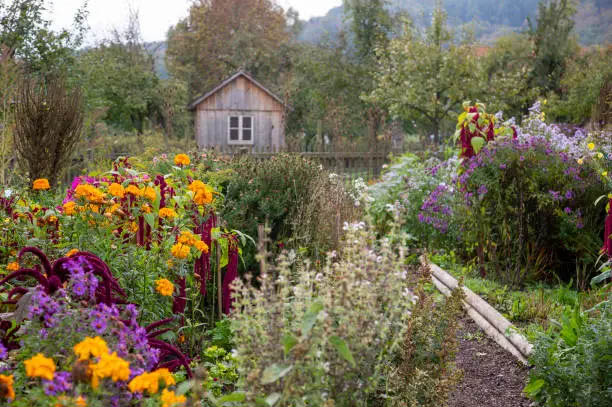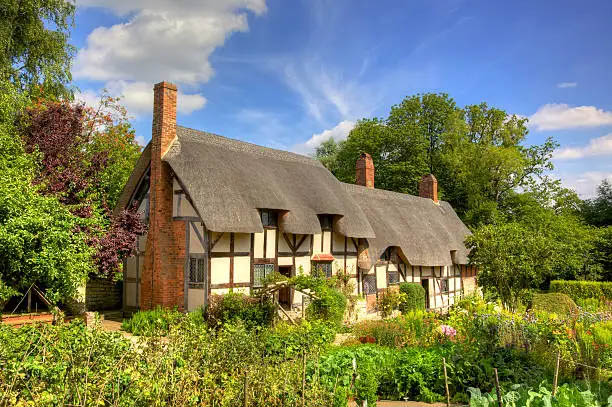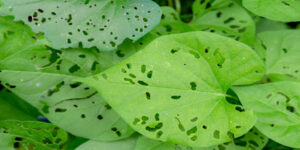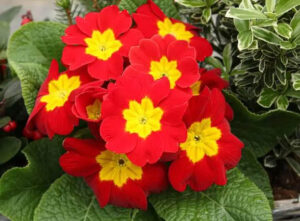The cottage garden, with its delightful mix of flowers, herbs, and vegetables, holds a special place in the history of gardening. What began as a practical means of subsistence has evolved into an aesthetic choice that symbolizes comfort and a return to simpler times. This article explores the transformation of the cottage garden from its humble beginnings to its current status as a beloved garden style celebrated for its charming disarray and dense plantings.
The Origins of the Cottage Garden
The cottage garden’s roots are planted firmly in the soil of medieval England. These gardens were not designed for beauty but were utilitarian spaces closely tied to the daily survival of the cottager’s family. They were functional, with every inch of space used to grow vegetables, herbs for medicinal and culinary use, and fruit trees. Flowers were often grown alongside these practical plants, not only for their aesthetic appeal but also to ward off pests and attract pollinators.
The Evolution During the Tudor Period

During the Tudor period, the cottage garden began to evolve. While still primarily utilitarian, these gardens started to include a wider variety of flowering plants. The inclusion of flowers such as roses, hollyhocks, and lavender added color and fragrance to the garden, providing pleasure to the cottager’s family and passersby alike. This period marked the beginning of the cottage garden’s transition towards what it is recognized as today—a place of both utility and beauty.
The Victorian Influence

The Victorian era brought significant changes to the cottage garden, infusing it with a new layer of ornamentation and a more deliberate aesthetic approach. The rise of the middle class meant that more people could afford to garden for pleasure, and they took inspiration from the picturesque, rambling look of traditional cottage gardens. Plants from all over the world were introduced thanks to the expansion of the British Empire, adding exotic new textures and colors to these gardens.
The Arts and Crafts Movement

The late 19th and early 20th centuries saw the influence of the Arts and Crafts movement, which emphasized traditional craftsmanship and naturally-inspired designs. This movement helped solidify the ideal of the cottage garden as a cozy, beautiful space where nature and human creativity harmoniously coexist. Famous garden designers like Gertrude Jekyll designed gardens that were both beautiful and practical, using formal designs loosely inspired by the informal style of old cottage gardens.
Modern Cottage Gardens

Today, the cottage garden is cherished for its nostalgic allure and romantic appearance. Modern cottage gardens blur the lines between practicality and ornamental gardening, often focusing more on the aesthetic aspect. They maintain the traditional dense plantings and include a variety of plants from herbs and edibles to ornamental shrubs and perennial flowers. Sustainability and biodiversity are also key, with gardeners choosing plants that support local wildlife and ecological health.
Function and Beauty
From its utilitarian origins to its current status as a symbol of rustic beauty, the cottage garden has evolved significantly over the centuries. Its history reflects broader changes in society regarding the way we view and interact with our environment. The cottage garden remains a testament to the enduring appeal of a garden that is both useful and beautiful, providing joy and utility in equal measure. Whether in a rural setting or a modern urban space, the spirit of the cottage garden can be adapted to fit any gardener’s needs, linking the past with the present in lush, living color.













